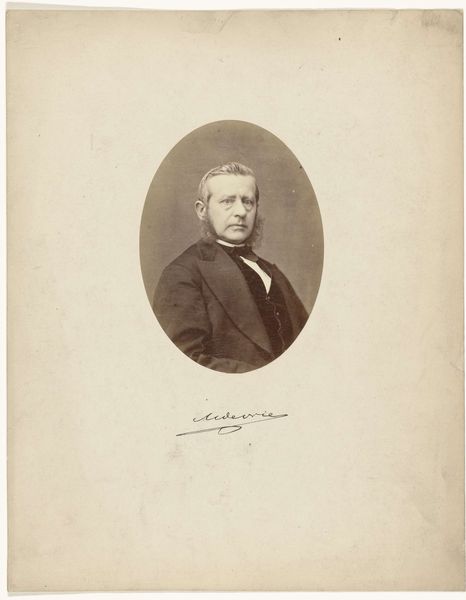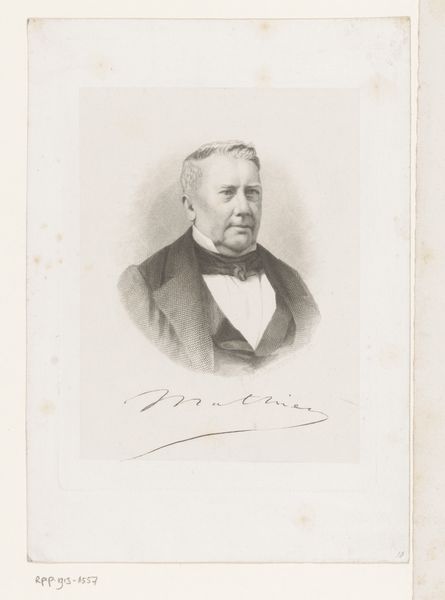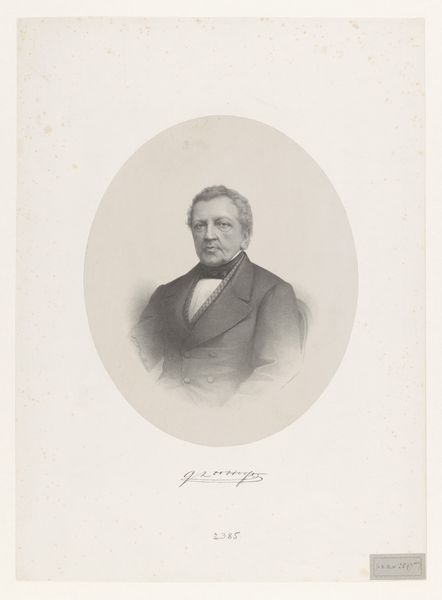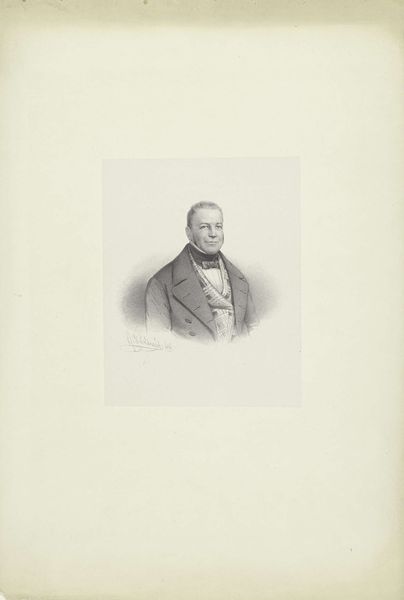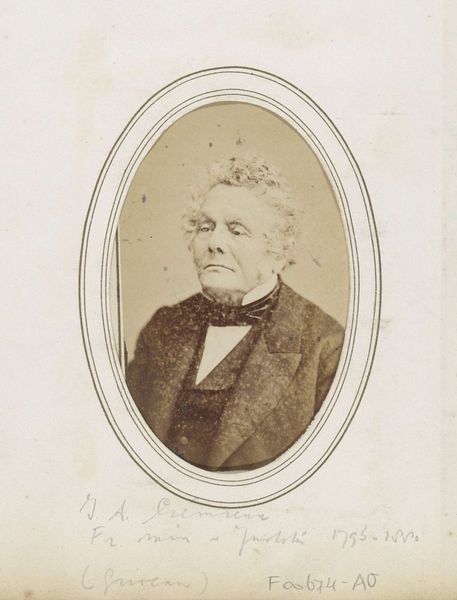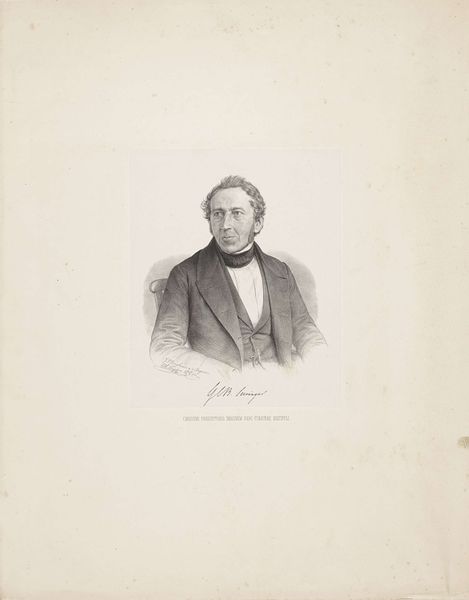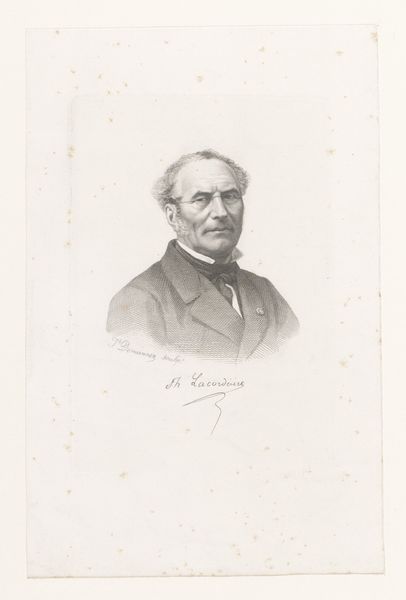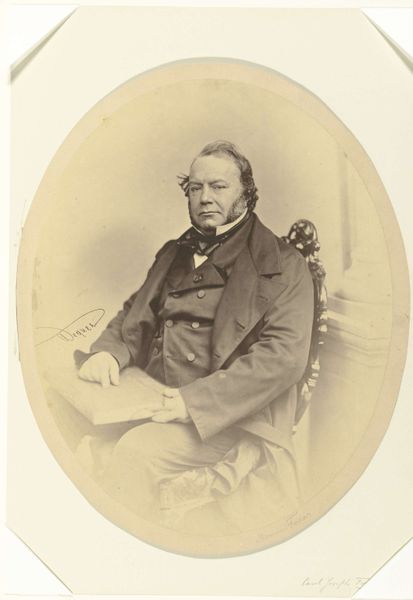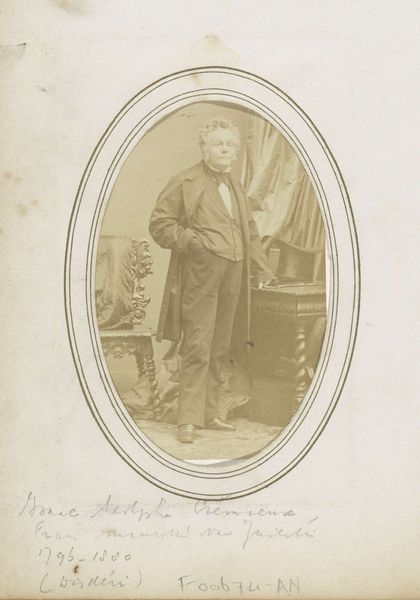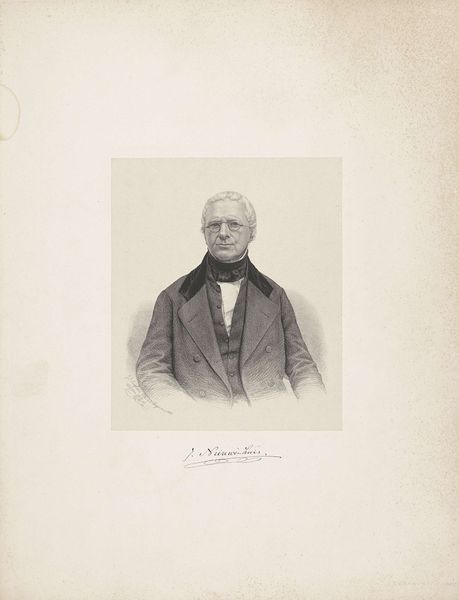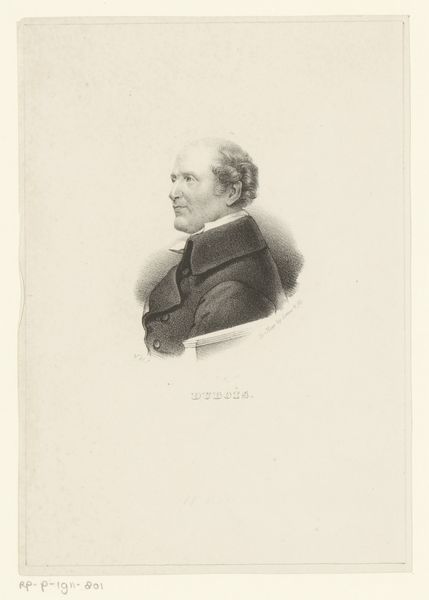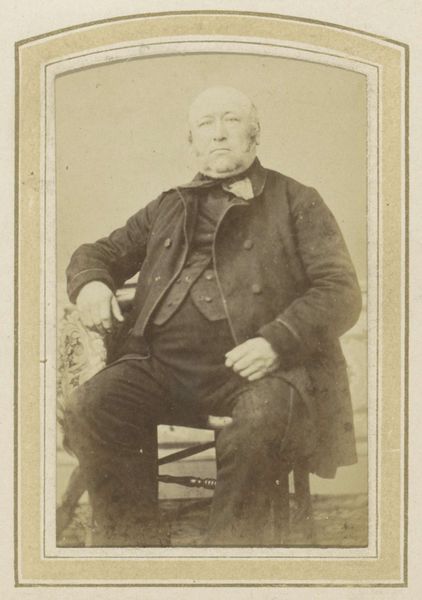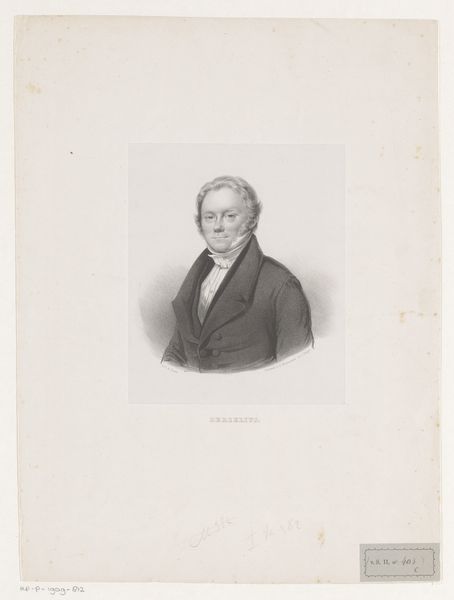
Portret van L.G. Pareau, hoogleraar in de faculteit Godgeleerdheid aan de universiteit van Groningen 1860 - 1864
0:00
0:00
photography
#
portrait
#
16_19th-century
#
photography
#
realism
Dimensions: height 102 mm, width 63 mm, height 534 mm, width 349 mm
Copyright: Rijks Museum: Open Domain
Curator: This daguerreotype from somewhere around 1860 and 1864 is entitled "Portrait of L.G. Pareau, Professor in the Faculty of Theology at the University of Groningen", and it's signed by Johannes Hinderikus Egenberger. What's your initial reaction? Editor: It feels austere. The man's stern gaze and the monochromatic tones definitely project a sense of gravity appropriate for a theologian of the time, but there is something else happening. Curator: It would be difficult to overstate the shifting cultural and political landscapes during the mid-19th century when Egenberger captured this image. Photography itself was challenging established traditions of power, of seeing, of recording, in favor of an increasingly democratized perspective. How do you see it influencing the narrative in this image? Editor: The most prominent emblem is his cross or star-like medallion worn on his coat; in tandem with his neatly combed hair, it anchors him as a pillar of established society. While the photograph is in some sense groundbreaking, the artist, or perhaps the sitter himself, consciously chose symbols and modes of presenting to highlight tradition. Curator: Indeed. Egenberger likely recognized how photography, though a technological marvel, could perpetuate existing hierarchies. A theological professor's portrait in the style of realism solidified his societal position but it could also threaten tradition as this photo is technically reproducible. Editor: You can see this tension embodied in the photograph’s composition too. Look at the delicate hand-drawn frame, which hints to the desire for timelessness while holding an innovative, easily duplicated photographic process. It feels caught between the old and new. Curator: And think about Pareau himself. As a professor of theology, he held considerable social and intellectual power within his community. His stance here, captured in this relatively new medium, suggests a negotiation— a desire to embrace modernity while safeguarding the sanctity of established knowledge. He becomes an interlocutor between tradition and innovation. Editor: Looking at the photograph now, I notice both Pareau and Egenberger operate on such self-conscious levels of performance. From the slight blurring due to longer exposure times to the angular picture frame surrounding the picture, I feel that everything in the photo symbolizes transition. Curator: Agreed, a compelling synthesis. We see, ultimately, how this early photograph is both a product of its time and a commentary on the societal shifts that defined it, embodying a subtle tension between holding onto power and embracing change.
Comments
No comments
Be the first to comment and join the conversation on the ultimate creative platform.
